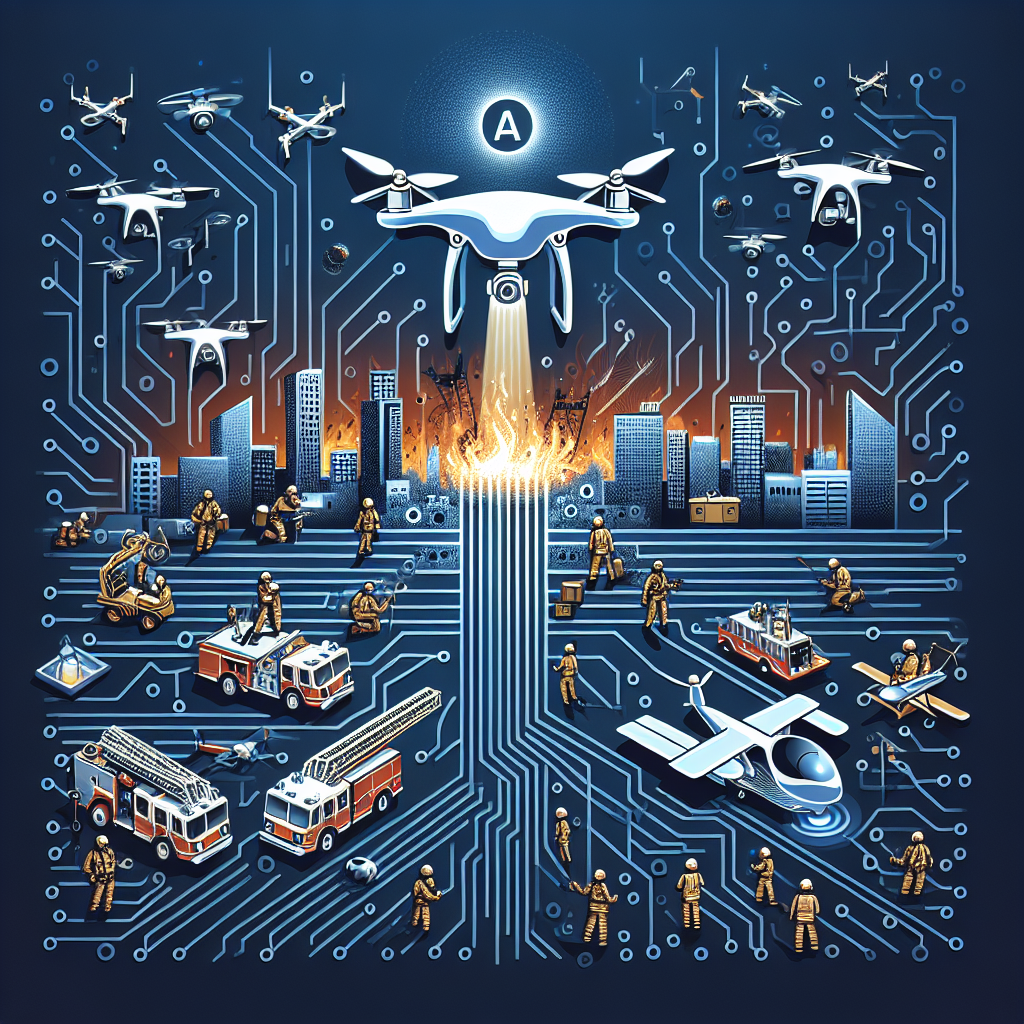In recent years, the use of artificial intelligence (AI) automation in disaster response has been revolutionizing the way emergency services and aid organizations handle crises. From natural disasters like hurricanes and earthquakes to man-made disasters such as terrorist attacks, AI technology is being utilized to improve response times, enhance decision-making processes, and ultimately save lives. In this article, we will explore how AI automation is transforming disaster response efforts and the benefits it brings to the table.
One of the key ways in which AI automation is revolutionizing disaster response is through predictive analytics. By analyzing vast amounts of data from various sources such as satellite imagery, social media posts, and weather patterns, AI algorithms can predict when and where a disaster is likely to occur. This allows emergency services to proactively prepare for an impending crisis, mobilize resources, and evacuate people in harm’s way. For example, during the 2018 California wildfires, AI technology was used to forecast the spread of the fires and identify areas at high risk of destruction, enabling firefighters to prioritize their efforts and save lives.
AI automation is also being used to improve communication and coordination among different agencies involved in disaster response. By using chatbots and natural language processing algorithms, emergency services can streamline communication channels, share critical information in real-time, and coordinate rescue operations more effectively. This not only speeds up response times but also ensures that resources are allocated efficiently and redundancies are minimized. Furthermore, AI-powered drones and robots are being deployed in disaster zones to assess damage, deliver supplies, and conduct search and rescue missions in hazardous environments where human intervention may be limited.
Another significant benefit of AI automation in disaster response is the ability to analyze and manage big data. During a crisis, emergency services are inundated with a massive amount of information coming from various sources, making it challenging to sift through and extract actionable insights. AI algorithms can process and analyze this data in real-time, identify patterns and trends, and provide decision-makers with valuable intelligence to make informed decisions. For example, AI-powered risk assessment tools can help emergency managers prioritize response efforts based on factors such as population density, infrastructure vulnerability, and environmental conditions, leading to more effective disaster mitigation strategies.
Furthermore, AI automation is enhancing the efficiency and effectiveness of resource allocation in disaster response. By using machine learning algorithms, emergency services can optimize the deployment of personnel, equipment, and supplies based on real-time data and changing conditions on the ground. This allows for a more agile and flexible response to rapidly evolving situations, ensuring that resources are allocated where they are needed most. Additionally, AI technology can help forecast demand for critical resources such as food, water, and medical supplies, enabling aid organizations to pre-position supplies in strategic locations and avoid shortages during emergencies.
Despite the numerous benefits of AI automation in disaster response, there are also challenges and limitations that need to be addressed. One of the main concerns is the potential for biases in AI algorithms, which can lead to inaccurate predictions or decisions that may have negative consequences in a crisis situation. It is crucial for developers to ensure that AI systems are trained on diverse and unbiased datasets to minimize the risk of bias and ensure the reliability of their outputs. Additionally, there are ethical considerations surrounding the use of AI technology in disaster response, such as privacy concerns, data security risks, and the potential for misuse of AI-powered tools for surveillance or control purposes.
In conclusion, AI automation is revolutionizing disaster response by improving predictive capabilities, enhancing communication and coordination, managing big data, and optimizing resource allocation. The integration of AI technology into emergency services and aid organizations is transforming the way we prepare for and respond to disasters, making response efforts more efficient, effective, and ultimately saving lives. However, it is essential to address the challenges and ethical considerations associated with AI automation to ensure that its benefits are realized while mitigating potential risks. By leveraging the power of AI technology, we can revolutionize disaster response and build more resilient communities that are better prepared to face future crises.
FAQs:
Q: How is AI automation used in disaster response?
A: AI automation is used in disaster response to predict when and where a disaster is likely to occur, improve communication and coordination among different agencies, analyze and manage big data, and optimize resource allocation.
Q: What are the benefits of using AI technology in disaster response?
A: The benefits of using AI technology in disaster response include improved predictive capabilities, enhanced communication and coordination, efficient management of big data, and optimized resource allocation, leading to more effective and timely response efforts.
Q: What are the challenges of using AI automation in disaster response?
A: Challenges of using AI automation in disaster response include potential biases in AI algorithms, ethical considerations surrounding privacy and data security, and the risk of misuse of AI-powered tools for surveillance or control purposes.
Q: How can developers address biases in AI algorithms used in disaster response?
A: Developers can address biases in AI algorithms by ensuring that AI systems are trained on diverse and unbiased datasets, conducting regular audits of AI models for bias detection, and implementing algorithms that are transparent and explainable in their decision-making processes.

